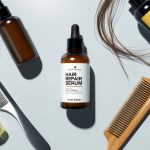How to Build an Effective Skincare Routine for Every Skin Type
Building an effective skincare routine is achievable for every skin type with the right steps and a consistent approach. A successful skincare routine focuses on gentle cleansing, moisturizing, and daily sun protection, tailored to individual skin needs.
Using products in the correct order—from thinnest to thickest consistency—can help maximize benefits and avoid irritation, no matter whether the skin is dry, oily, or sensitive.
Starting a new regimen doesn’t have to be complicated or overwhelming. By learning about your skin type and selecting products suited for it, anyone can create a routine that addresses hydration, protection, and nourishing care for healthier skin.
The right combination of cleanser, moisturizer, and sunscreen forms the core of a simple yet effective skincare routine. Optional steps like toning and serums can be added for extra support.
Understanding Your Skin Type
Identifying your skin type is the first step in tailoring an effective skincare routine. Each type—whether oily, dry, combination, or sensitive skin—has unique needs and responds differently to various products and environmental factors.
Identifying Oily, Dry, Combination, and Sensitive Skin
Understanding the characteristics of each skin type helps in selecting the right skincare products and ingredients. Oily skin often looks shiny, especially in the T-zone (forehead, nose, and chin), and may be prone to enlarged pores and blemishes.
Dry skin tends to feel tight, rough, or flaky, lacking natural oils and moisture. Combination skin displays both oily and dry areas, typically with oiliness in the T-zone and dryness on the cheeks.
Sensitive skin is easily irritated and may show redness, itching, burning, or stinging after using certain products. It can overlap with blemish-prone skin or be aggravated by harsh weather, fragrances, or allergens.
Consistently monitoring the skin’s reaction to cleansers, moisturizers, and other products provides insight into its type and needs. More on identifying your skin type can be found in this CeraVe skin type guide.
Assessing Your Skin Concerns
Recognizing specific skin concerns enables individuals to address issues more precisely within their routine. Common concerns include fine lines, wrinkles, and signs of photoaging such as sun spots.
Dark circles and puffiness often appear around the eyes, while uneven skin tone, blemishes, and persistent dryness may be seen on various areas of the face. Blemish-prone skin, characterized by frequent breakouts and clogged pores, requires targeted products to reduce inflammation and excess oil.
Individuals should also consider factors like redness, sensitivity, or dullness when assessing their skincare concerns. By identifying these issues early, a routine can include treatments and active ingredients specific to those needs, helping to maintain skin health and appearance.
The Role of Genetics and Lifestyle
Genetics play a primary role in determining skin type, as they influence oil production, sensitivity, and how the skin ages. For example, a family history of oily or sensitive skin often means similar traits in close relatives.
However, lifestyle factors such as diet, sleep, and sun exposure also impact skin condition and concerns like dullness, dryness, and premature wrinkles. Environmental stressors—like air pollution, climate changes, or occupational hazards—can trigger or worsen skincare concerns.
Daily habits, including consistent sunscreen use or wearing makeup, may contribute to issues like uneven skin tone or clogged pores. Awareness of these influences allows individuals to adjust their routines and make informed product choices for their current needs and long-term skin health.
The Essential Steps of a Skincare Routine
A skincare routine works best when it is tailored to specific skin needs and each product is applied in the right order. Consistency, gentle ingredients, and proper technique are vital for supporting healthy-looking skin and visible results.
Cleanse: The Foundation for Healthy-Looking Skin
Cleansing is the first step in any effective skincare routine because it removes dirt, oil, makeup, and environmental pollutants. Using a gentle cleanser that suits one’s skin type helps maintain the skin’s natural barrier while clearing away impurities that could clog pores or contribute to dullness.
A well-formulated cleanser should not leave the skin feeling overly tight or dry. For most skin types, cleansing twice daily—once in the morning and once at night—offers the right balance between cleanliness and barrier protection.
Those with especially dry or sensitive skin may only need to cleanse once daily, usually at night. Key points to remember when choosing a cleanser:
- Gel cleansers work well for oily or acne-prone skin.
- Cream or hydrating cleansers are best for dry or mature skin.
- Micellar waters can benefit sensitive or minimalist routines.
Daily cleansing not only forms the base of the skincare routine but also ensures that other products—like serums and moisturizers—are absorbed more effectively (more detail).
Tone: Prepping for Better Absorption
Toners are applied after cleansing to rebalance pH, remove leftover impurities, and prep the skin for better absorption of other skincare products. Modern toners often contain ingredients that hydrate, calm, or gently exfoliate, depending on the formulation.
Alcohol-free toners are ideal for most skin types, as they avoid stripping away moisture. Popular ingredients in toners include witch hazel for soothing, hyaluronic acid for hydration, and niacinamide for balancing oil production.
Those with sensitive or dry skin should look for formulas labeled as hydrating or soothing, while individuals with oily or acne-prone skin may benefit from gentle astringent or exfoliating toners. Application is simple:
- After cleansing, apply toner with a cotton pad or pat directly into the skin with fingertips.
- Allow it to absorb fully before layering additional products.
This step enhances the overall effectiveness of the skincare routine by priming the skin, making it ready for targeted treatments or moisturizers (detailed explanation).
Moisturize: Locking in Hydration
Moisturizing is essential for supporting the skin’s natural barrier and maintaining optimal hydration levels. The right moisturizer helps prevent water loss, softens texture, and provides a protective layer against daily stressors.
Choosing the right moisturizer depends on skin type and individual needs.
- Gel moisturizers absorb quickly and work well for oily or combination skin.
- Cream moisturizers deliver deeper hydration for dry or mature skin.
- Lotion formulas offer a lighter feel for normal skin types.
The best time to apply moisturizer is immediately after toner or treatments, when the skin is slightly damp. This maximizes hydration and ensures even application.
Look for ingredients such as ceramides, glycerin, or squalane for barrier support, and choose non-comedogenic formulas to avoid pore clogging. Daily use of moisturizer helps visibly improve skin texture and resilience, making it a key pillar of any skincare routine (find more advice).



